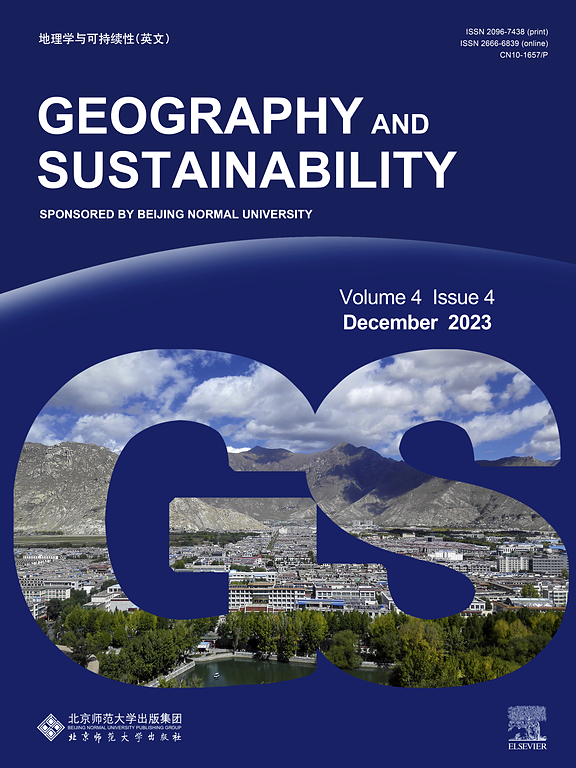Ensemble modelling for smart conservation strategies for forest reptile species at their range edges in Europe amidst climate change
IF 8
1区 环境科学与生态学
Q1 GEOGRAPHY, PHYSICAL
引用次数: 0
Abstract
Reptile fauna should be considered a conservation objective, especially in respect of the impacts of climate change on their distribution and range’s dynamics. Investigating the environmental drivers of reptile species richness and identifying their suitable habitats is a fundamental prerequisite to setting efficient long-term conservation measures. This study focused on geographical patterns and estimations of species richness for herpetofauna widely spread Z. vivipara, N. natrix, V. berus, A. colchica, and protected in Latvia C. austriaca, E. orbicularis, L. agilis inhabiting northern (model territory Latvia) and southern (model territory Ukraine) part of their European range. The ultimate goal was to designate a conservation network that will meet long-term goals for survival of the target species in the context of climate change. We used stacked species distribution models for creating maps depicting the distribution of species richness under current and future (by 2050) climates for marginal reptilepopulations. Using cluster analysis, we showed that this herpeto-complex can be divided into “widespread species” and “forest species”. For all forest species we predicted a climate-driven reduction in their distribution range both North (Latvia) and South (Ukraine). The most vulnerable populations of “forest species” tend to be located in the South of their range, as a consequence of northward shifts by 2050. By 2050 the greatest reduction in range is predicted for currently widely spread Z. vivipara (by 1.4 times) and V. berus (by 2.2 times). In terms of designing an effective protected-area network, these results permit to identify priority conservation areas where the full ensemble of selected reptile species can be found, and confirms the relevance of abiotic multi-factor GIS-modelling for achieving this goal.

气候变化背景下欧洲森林爬行动物物种范围边缘智能保护策略的集合模型
爬行动物动物群应被视为一项保护目标,特别是考虑到气候变化对其分布和范围动态的影响。研究爬行动物物种丰富度的环境驱动因素并确定其适宜栖息地是制定有效的长期保护措施的基本前提。本文研究了分布广泛的vivipara、N. natrix、V. berus、A. colchica等在拉脱维亚受到保护的爬行动物的地理格局和物种丰富度的估算。最终目标是指定一个保护网络,以满足目标物种在气候变化背景下生存的长期目标。我们使用堆叠物种分布模型来绘制地图,描绘边缘爬行动物种群在当前和未来(到2050年)气候下的物种丰富度分布。聚类分析表明,该疱疹复合体可分为“广布种”和“森林种”。对于所有的森林物种,我们预测它们的分布范围在北部(拉脱维亚)和南部(乌克兰)都有气候驱动的减少。到2050年,“森林物种”最脆弱的种群往往位于其活动范围的南部,这是向北转移的结果。预计到2050年,目前广泛传播的Z. vivipara(减少1.4倍)和V. berus(减少2.2倍)的范围将减少最多。在设计有效的保护区网络方面,这些结果允许确定优先保护区,在那里可以找到选定爬行动物物种的完整集合,并证实了非生物多因素gis建模与实现这一目标的相关性。
本文章由计算机程序翻译,如有差异,请以英文原文为准。
求助全文
约1分钟内获得全文
求助全文
来源期刊

Geography and Sustainability
Social Sciences-Geography, Planning and Development
CiteScore
16.70
自引率
3.10%
发文量
32
审稿时长
41 days
期刊介绍:
Geography and Sustainability serves as a central hub for interdisciplinary research and education aimed at promoting sustainable development from an integrated geography perspective. By bridging natural and human sciences, the journal fosters broader analysis and innovative thinking on global and regional sustainability issues.
Geography and Sustainability welcomes original, high-quality research articles, review articles, short communications, technical comments, perspective articles and editorials on the following themes:
Geographical Processes: Interactions with and between water, soil, atmosphere and the biosphere and their spatio-temporal variations;
Human-Environmental Systems: Interactions between humans and the environment, resilience of socio-ecological systems and vulnerability;
Ecosystem Services and Human Wellbeing: Ecosystem structure, processes, services and their linkages with human wellbeing;
Sustainable Development: Theory, practice and critical challenges in sustainable development.
 求助内容:
求助内容: 应助结果提醒方式:
应助结果提醒方式:


